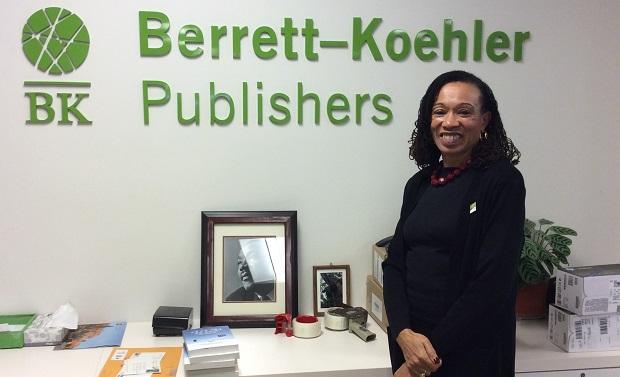As a member of Generation X, who according to the Pew Research Center are those born roughly between 1965 and 1980, I am in a unique place in history. While recently called the “Sandwich Generation” because we are likely to have aging “Boomer” parents and young “Millennial” children, I have always felt more like a bridge than a sandwich.
I feel more like a bridge for primarily for two reasons: technology and work attitudes.
In terms of being a bridge regarding technology, some of the technology taken for granted by today’s children made its first appearance or became mainstream while I was a child—but was almost nonexistent for our parents (i.e. today’s electronics and the internet). I have lived through this evolution, and therefore, I can understand both its positive and negative effects. As for work attitudes, I am a bridge between older notions of “hard work” and newer ideals such as “living to work, working to live” and “work-life balance”.
As a very young child, I distinctly remember seeing my very first color television. I was with my mother and her best friend while she was visiting another friend. What I remember most was this booming sound coming from what first appeared to be a wooden box on the floor. It was, in fact, a floor model television with stereo sound – state of the art then but now considered a dinosaur in the age of flat screens and smart TVs. Shortly afterwards we too had a color floor model, but I do not remember a TV before then.
Television advances span my and my family’s lifetimes. My mother, who was a young child in the 1950s, did not have a television at all while growing up. Juxtapose that with children of today who are likely growing up in homes that have multiple televisions. I was a teen when cable programming gained prominence and made programming available twenty-four hours a day. Gone are televisions with knobs for changing the channel. Today we have buttons and remotes – which can render a TV almost useless if the wrong button is pushed or the remote is lost.
In another example of technological advances, I was a freshman in high school when I came across my first personal computer. It was in the Library/Media Center at Minneapolis Central High. I was on a tour around my new school, and the guide was very prideful of the Apple Computer we had. I remember telling myself, “I’ll never use that thing unless I have to” after being given a brief introduction about its use, which included an explanation of the floppy disc.
Thirty-five years later, I sit here writing this on a PC, not a typewriter, and I’m amazed at how manual processes have been automated using computers during my lifetime. Paper documents once delivered through the Postal Service are currently sent as a PDF file via email. Years ago in the workplace, I went from a desktop to a laptop and was granted remote access. Why? During a Business Continuity Planning session, it became evident that in the event of a catastrophe affecting my worksite, I would not be able to work without a computer.
Enter the internet, cell phones, fax machines and copiers and even kitchen gadgets like electric can openers, microwaves and bread makers. Devices that were unheard of a century ago, gained prominent usage within the last 50 years, and are everyday appliances in offices and homes around the globe today.
I am a bridge between a generation of people who have lived all their lives in a technological age and a generation to whom some of these technologies seemed unheard of as children, and maybe even as adults. If the older generation is the “Boomers,” I call this younger generation the “Thumbers” because in my opinion, they spend way too much time on devices either playing games, watching videos or using social media.
On the other side of the spectrum, my Boomer Aunt still does not know how to send or receive a text and is perfectly comfortable with her flip phone. For her, a phone is for talking, not picture-taking, listening to music, or the myriad of things we can do with them using apps.
I am a bridge because I have seen the progression of technologies in their infancy to the modern day and have had to assimilate to the change to keep up or be lost in a sea of modernity. For example, while I have adapted to using GPS for directions, I still purchase maps and atlases to navigate new territories when road tripping. However, I have Millennial children who have anxiety about traversing into uncharted territory if they cannot connect to GPS on a cloudy day. Their dependence is so great some have not even bothered to learn the layout of the city in which they were born and raised. It amazes them that I can give directions to cities hundreds of miles away because I have all but memorized the parts of the Interstate Highway system that I have traveled. They are even more amazed that our Boomer Aunt travels all over our Metro area without a GPS and nothing more than street names and the mention of a landmark or two. I am not sure if any of my six adult children know what the acronym they take for granted stands for: “Global Positioning System”.
I am a bridge with regards to work attitudes as well, specifically around “living to work, working to live” and “work-life balance”. How many of us have come across friends and family in older generations who were able to be paid for days, weeks, and even months prior to officially retiring because they had accrued sick-time? How many of us have heard the “back in my day” stories when we dared to take a day off due to something like allergies or other similar and relatively mild malaise?
The Boomers’ work and jobs defined them so that many spent their whole work lives at the same company – maybe even doing the same job. Contrast that with the younger generations searching for “work-life balance” such that they will start and stop jobs based on criteria like “I didn’t like the hours” or “I had to wear a uniform”. How many work multiple part-time jobs or “gigs” to pay the phone bill or rent and then hit the beach or surf the internet for days until the next bill arrives or the cupboards are getting bare?
I am a bridge between these two work styles with one foot in each camp. I am constantly explaining one to the other. For one generation, idleness and inactivity are akin to a sloth, so if you are not physically busy it means you are not working. For the other generation, working up a sweat or through your lunch break is, “doing too much” if there is no immediate personal gratification.
I know these are generalizations, but I think all of us can identify with more than one person who fits these generational models on some level. I am the bridge that can and will use technological advances when appropriate and necessary but will resort to doing things the “old fashioned way” when needed. I will call my Aunt but text my children. I shop online as a matter of convenience but prefer brick and mortar stores for clothing purchases. I can use MapQuest to navigate from state to state but find Rest Stop wall maps more reliable. I still buy books and albums (CDs actually) and consider it a treat when my purchase has a digital component so that I do not have to choose one over the other. How many of us have telephones on our desks but spend most of our time communicating via email or instant messaging?
I will never forget the old codger – Al – that lived on the same block as the candy and corner stores in my neighborhood growing up. He would tell this one joke repeatedly about not being able to tell boys and girls apart because boys were wearing their hair long, and girls were wearing pants. He had other similar jokes, but this is the one I remember the most. I liked talking to him and hearing about how things had changed over the years.
A lot of the kids would laugh and comment about how out of touch he was since long hair on men and pants on women were common in the 1980s, but I understood his story then just as much as I do now. He was trying to explain the generational differences he had experienced. It was through his lens that I first understood how people from different times and places could be so alike even when they appear to be quite different. He too was a bridge, like me, trying to get along and make sense out of a world that is ever changing.
Are you a bridge or a wall? Do you seek to foster understanding? Are you an ally? Can you recognize privilege and systems of oppression? Do you speak out about them?
Are you a wall—an unchanging piece of the landscape that stifles the growth and movement of others? If so, it is time that you climb the wall and get to know what is on the other side. You will definitely gain a better understanding of those around you and may find that the grass is a little bit spicier, if not a little bit greener.





![I Am [From] Woman: An Ode From a Man](https://theinclusionsolution.me/wp-content/uploads/2017/03/i-am-from-women-620x330.png)













